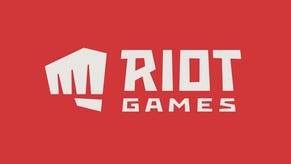Arcane Act 1 review - Riot's glossy animated Netflix series opens with a striking, if familiar, bang
Magic show.
Editor's note: just a heads up that we do get into some light story details here, although much of it is known if you're already familiar the characters already from the games.
As with everything Riot Games produces these days, the money is very much on the screen in Arcane, its striking new animated series that's first act arrived on Netflix this past weekend, the second arriving on the 13th. As a fan of League of Legends (to my eternal shame), it is an unsurprising treat, full of winks and nods and shiny blue nuggets of lore, just as I'd hoped, and indeed suspected, a studio of Riot's now formidable stature could manage. As a fan of just plain, good television though, it very much is a surprise. Arcane is actual, good TV.
To get the obvious question out of the way: no, you very much do not need to be a LoL fan to enjoy Arcane. It's a prequel, and the goal here is pretty obvious - to hook in a new wave of fans through an entirely new medium, who may even stick just to that medium. Arcane is set a few years before the "now" of League of Legends, whenever that really is. Basically, it follows a handful of characters from LoL, but they're all a few years younger. Those that regular players might know as being in their 20s are instead in their teens and tweens, those in their late 30s are in their early 20s, those in their mid-300s, like the Yoda-esque Yordle scientist, Heimerdinger, are in their early to mid-ish 300s.
It's a clever way to balance the two - an avalanche of freshly backfilled lore for the LoL nerds, and an equal entry point for new viewers who know nothing - and Riot has been clever here across the board, really. Arcane is set in the twin cities of Piltover, a shiny steampunk land of scientific (and economic) progress, and Zaun, an "undercity" that exists beneath it, just as steampunky and ingenuitive but minus the freedom and security, and money. It's a smart setting because, as far as LoL's world of Runeterra (and connected "realms") goes, it's the one that splits the difference between the safety of something recognisable - fairly modern technology, humanoids, guns - with something a bit new - the mix of magic, the relatively less-popularised steampunk genre, Heimerdinger's weird yellow hair that looks kind of like a giant brain.
Arcane is novel, in so many ways, but it's also extraordinarily safe in plenty of others. This is something of a theme with Riot. If you've paid attention to the new games, post-League of Legends - card battler Legends of Runeterra, tactical shooter Valorant, even the more niche, auto-chess spinoff Teamfight Tactics - you'll notice they all land squarely in the middle of their respective genres, pitching a kind of severe competency first, novelty still there, but very much second to that. Coming from those games to Arcane, much of it can feel quite similar.
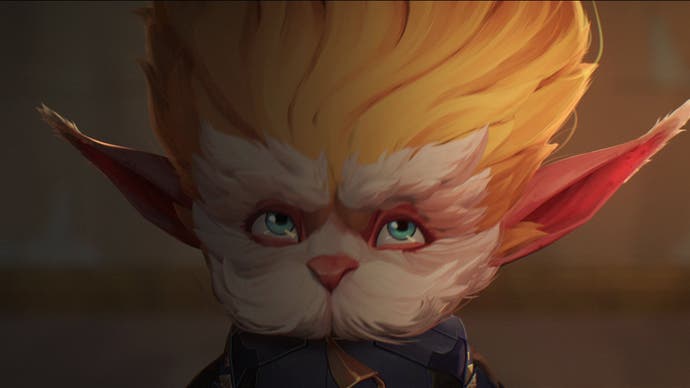
One big, unavoidable example here is its characters. The leads in Arcane - Vi, Jinx, Jayce, and the supporting acts like Ekko, Caitlyn, Viktor, and Heimerdinger - are all League of Legends champions, and League of Legends champions are, generally, tied to extremely recognisable archetypes, in some cases even other characters from popular culture. Jinx, a chaotic, murderous, scrawny villain is cut from the mould of Harley Quinn, for instance. Viktor, by the time of League of Legends, is a brilliant, embittered scientist with accompanying robo-arm, a la Doctor Octopus.
This is completely necessary in LoL, and indeed part of the whole fun of it - MOBAs are role-playing games as much as any, with progression, specialisation and their own kind of characterful immersion - but they're also extraordinarily intense, full of ultra high-intensity action. It means the game's champions must all be immediately recognisable, painted with broad strokes, identifiable from just their appearance, their four abilities, and maybe a dozen or so voice barks amongst the carnage. Bringing those well-realised, but ultimately quite shallow characters to life in a television series, more than the previous incarnations like the odd quick animated trailer with a few cocked eyebrows and cool flips, or even a feature-length film, means the writers have had to undergo a kind of retconning of depth, well beyond the already substantial lore reworks LoL has undergone in recent years.
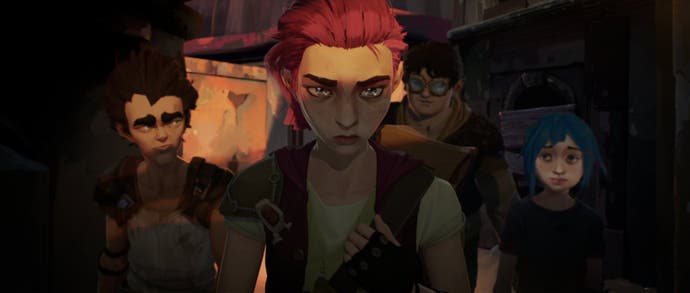
In places, it does show. Arcane, at least in its first four episodes, which are all I've seen so far, tells a couple of parallel stories. One focuses on an orphaned, teenage Vi (which stands for Violet, it turns out) and younger sister, Jinx (née Powder), who LoL fans will know to be rivals in the "present day", the two of them navigating criminality and increasingly dangerous mischief down in Zaun. The B-plot, as such, follows the brilliant heartthrob Jayce and his glamorous scientific endeavours up on the surface, alongside fellow Academy members Viktor and Professor Heimerdinger, and his ultra-privileged childhood friend Caitlyn.
The problem is it does, quite often, feel like you've seen these characters' stories many times before. Vi is the do-gooder forced to do wrong by nothing more than circumstance. Powder is younger, rejected by the older circle of friends, and faced with repeated claims that she is "not ready" for the real action ahead of a rather significant turn. Jayce slides into a subtle, reluctant arrogance. Caitlyn is plucky and determined contrary to her high-society upbringing. Viktor is a genius who's maybe too naively generous with that gift for his own good. Heimerdinger, once a groundbreaker, has become fearful and conservative with experience and age. The effect, combined with the origins of Arcane as a series itself, can occasionally make the whole thing feel like more of a lore-expanding exercise than a storytelling one, where characters undergo well-telegraphed character development but, given the sheer number of them and the relatively limited time Arcane gives to each on-screen, there's less time for just character, between the big, broad beats they must all hit on cue.
At the same time though, and this is crucial, those beats are brilliantly executed, and those characters are immediately, remarkably magnetic. Some of this comes from my perspective as a player - when it comes to fictional character attachment I'm as cold-hearted as any, I think, but as a long-time Viktor main I found myself weirdly, deeply compelled by seeing him on-screen, in motion, a viewing experience that feels at times like watching some freshly-discovered 8mm footage of a parent from before I was born: so this is my guy; this was what his life was like. It is weirdly - maybe a touch embarrassingly - emotional. Clearly those few-thousand hours with a select few champions in LoL had more of an impact on me than simply boosting my dexterity (or blood pressure).

Likewise, Arcane's animation is nothing short of extraordinary, a product of Riot's collaboration with Fortiche, a French studio that had previously worked on promotional events like music videos for the big K/DA K-pop events in League of Legends. At first glance - actually, at every glance - Arcane looks like a piece of static, hand-sculpted concept art come to life. It can be uncanny at times, a little otherworldly. Occasionally it feels like this is a painting that wants to be just that, a moving picture that longs to be still, forced into an unnatural locomotion through some kind of forbidden necromancy. But always it is striking, peaking in both the moments of emphatic, shocking violence and screen-filling explosions, and the quieter, one-off looks, laughs, and shrugs that bring such a welcome dose of texture to the action.
Through that animation, the relative sparsity of it - rarely does more than one thing at a time actually move on-screen, or at least rarely does it seem that way, bringing classic, staid Japanese animations like Neon Genesis Evangelion to mind - Arcane can achieve some real subtlety, gentle enough to cut through the broader strokes of its plotty story. We can all see what's happening to Powder, as she doesn't creep so much as leap towards her Anakin-esque transformation into Jinx - but the predictability doesn't make that eventual moment any less poignant or tragic. Nor the inevitable rift - I haven't seen this happen yet, but would bet just about anything on it - between Viktor and Jayce. (It's worth noting some have highlighted a spot of potential queer-baiting here, which may be an issue depending on how things develop, but, that said, there's as much of a case for this being a simple bromance - and platonic, emotional male relationships are also necessary in entertainment, in their own way).
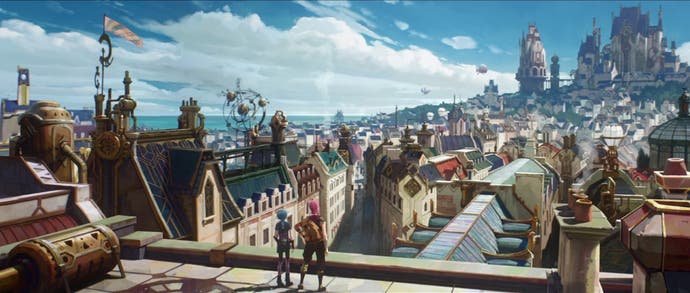
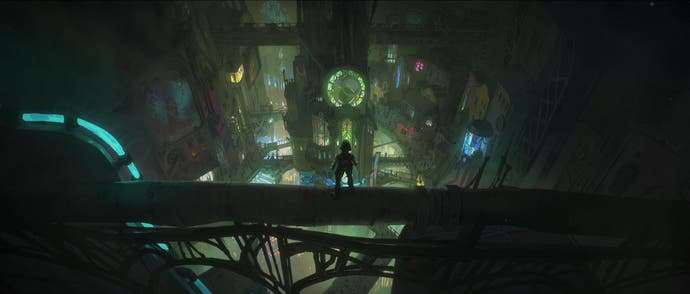
All this said, too, and this is still just the first four episodes - the first act of three, plus one little bit from the second. At the rate of the series' events we are whistling through the backstory of these characters, and that is probably the biggest point to be made here. Arcane is one series, likely created to be self-contained but, knowing there are a good half-dozen more regions on LoL's planet of Runeterra, plus a couple more "realms" for good measure, I suspect the potential is there to spend a season in a different location each time.
The LoL fan in me loves that - I am hooked on a frantically-paced origin story and cannot wait to see more of the same, applied to more of what I love - but the "good TV" fan feels otherwise. Arcane, in its second and third acts, could benefit massively from just slowing down a bit, spending a bit more time with the small group of characters it has right now, relishing those characters as characters, as opposed to things that must be programmatically developed at break-neck speed. It's absolutely a thrill, full of welcome colour and life. But modern TV, the really good stuff, is all about the slow burn, after all. Which will only make that big, conclusive boom that the likes of Jinx so long for feel even better.



